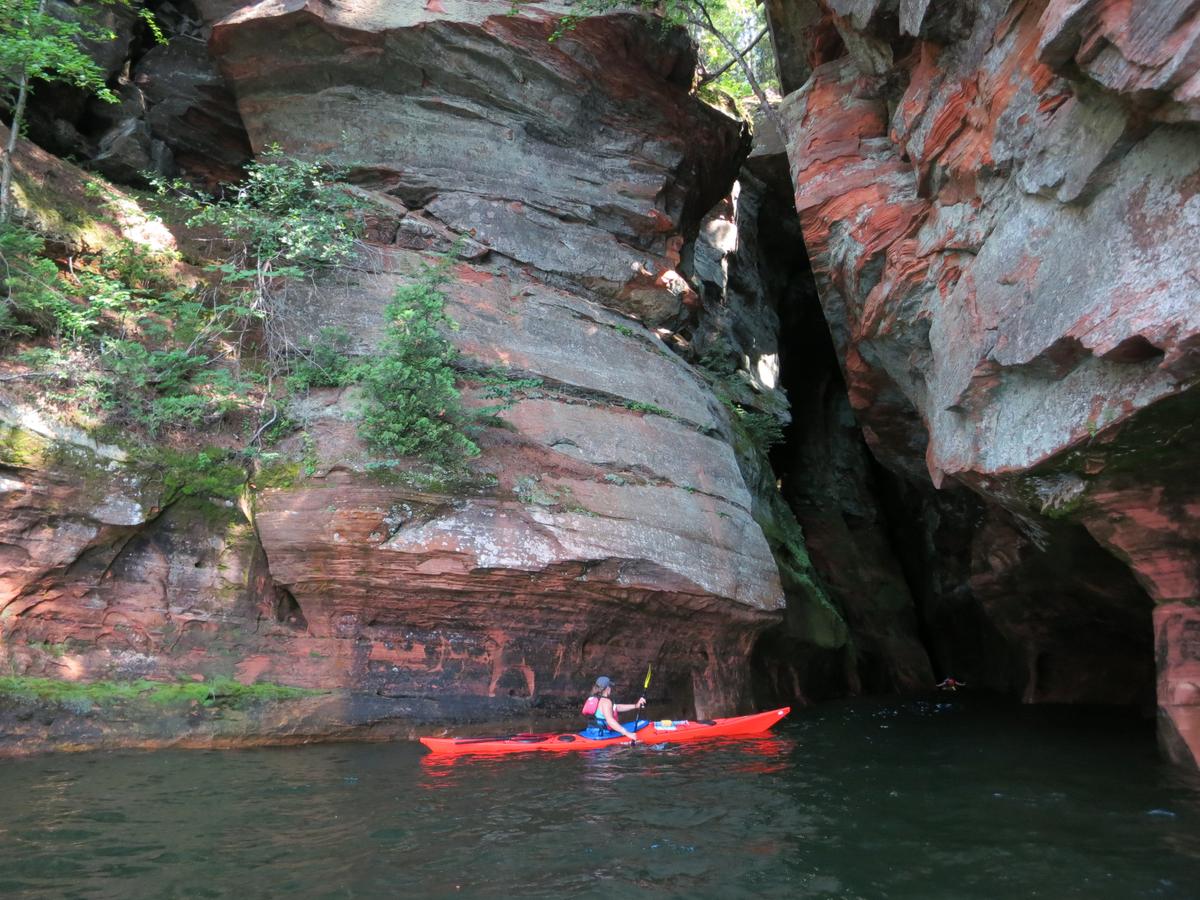Undeveloped beaches like sculpture gardens with pale sand, colored pebbles, and tangles of weathered driftwood. Cold and moody waters that can appear turquoise, deep blue, slate gray, or even muddy red. They change without notice: waves cresting white and angling like a blade into shore, then smoothing to glass and mirroring billowy white clouds, until the sky clears altogether and then lifting to a gentle roll once more but from another direction—all before lunch. This is Lake Superior, The Boss, who can decide if you’re going kayaking today, sticking to trails on solid ground, or perhaps staying indoors at wineries, cafés, breweries, and gift shops for the next couple hours. But on any day, it’s perfect for a drive.

A kayaker explores the Apostle Islands National Lakeshore. Kevin Revolinski





